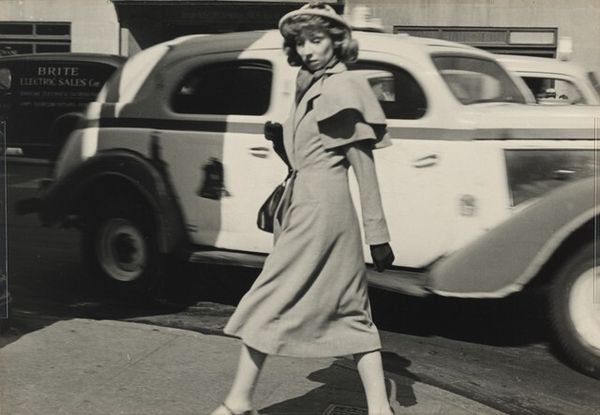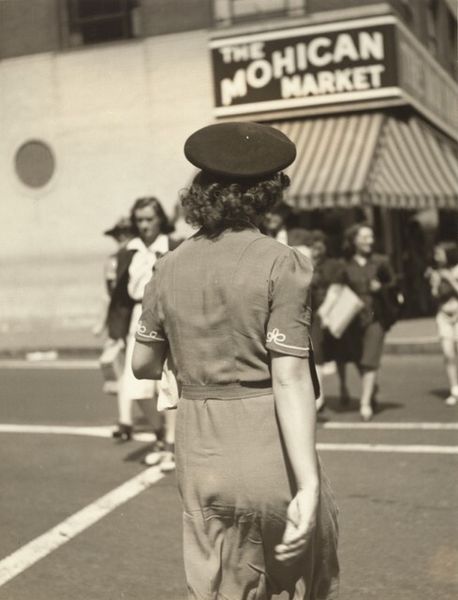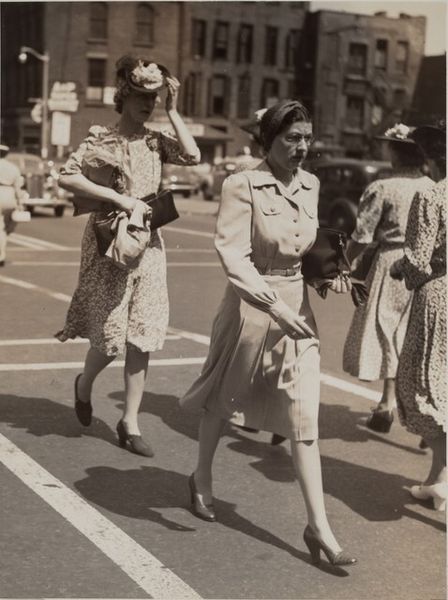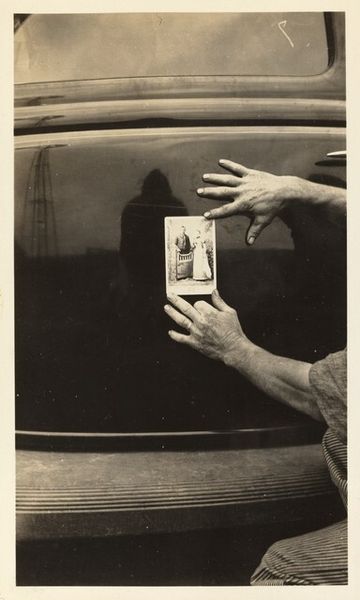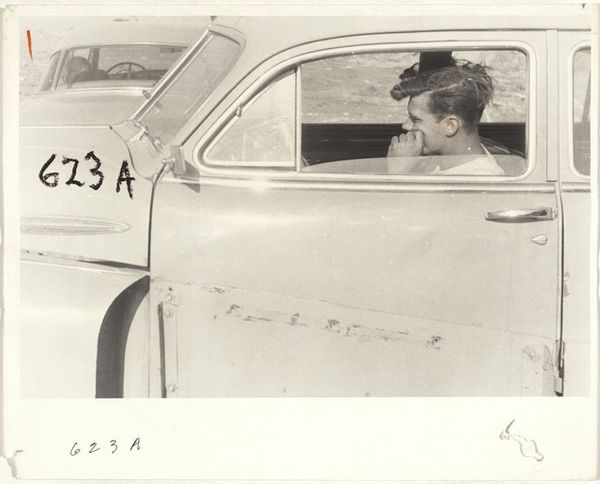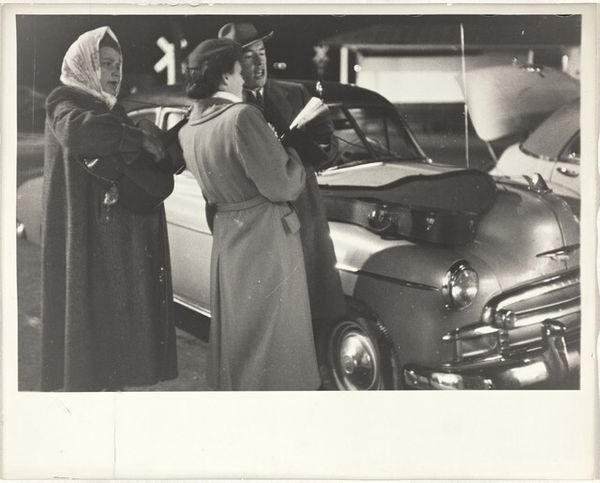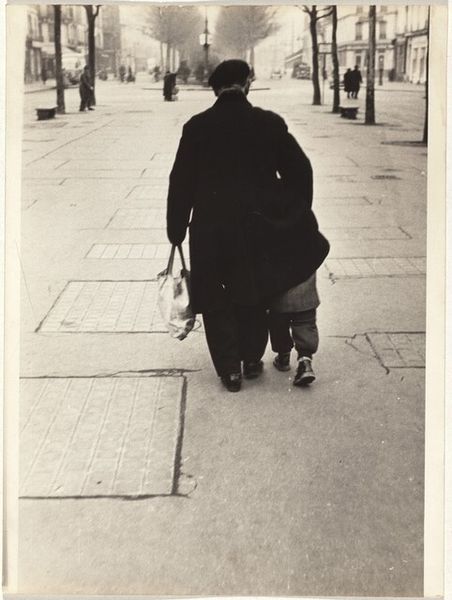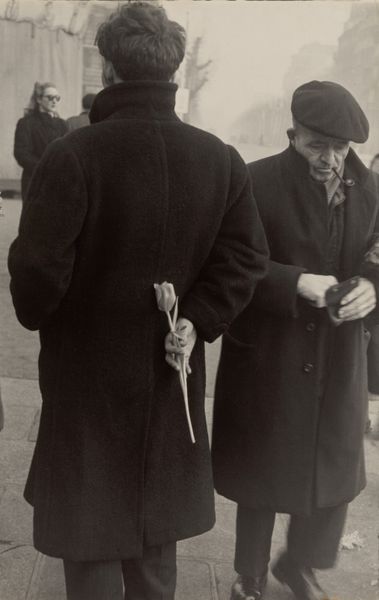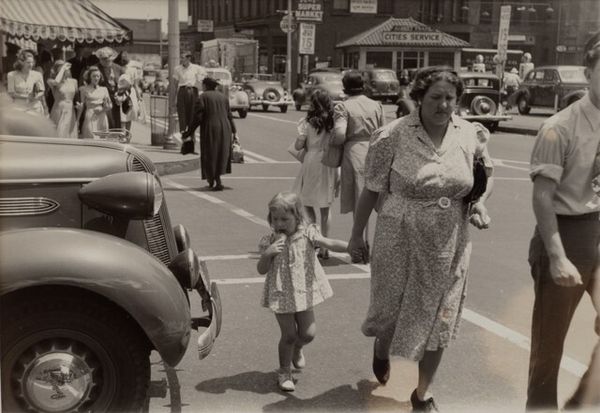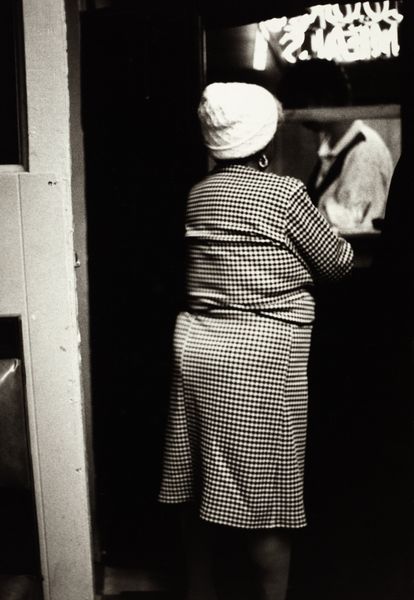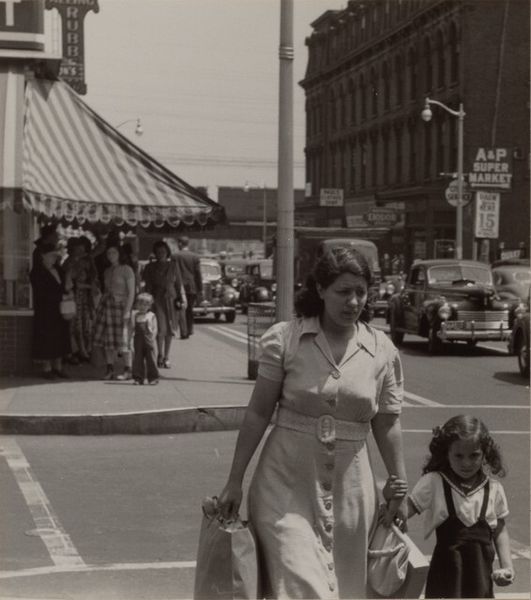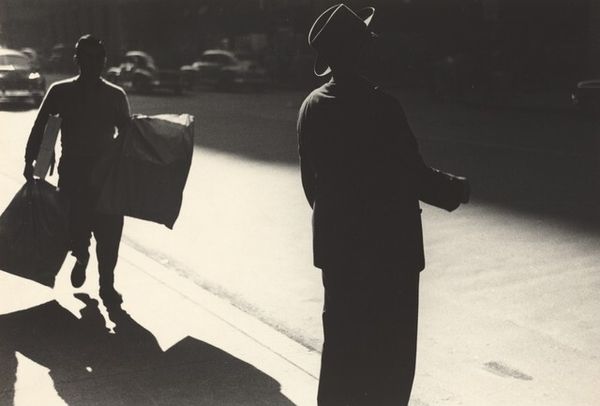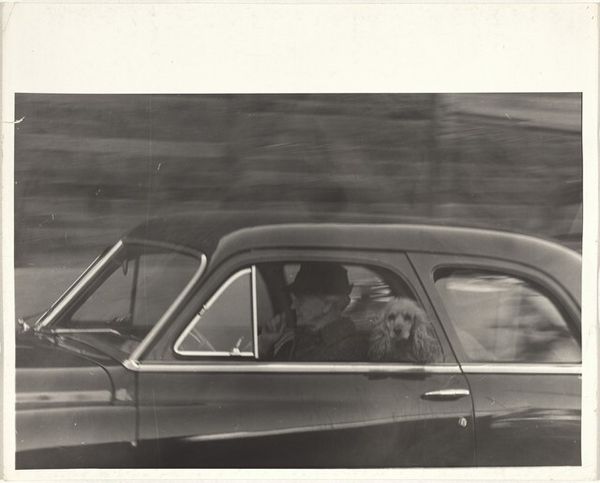
Dimensions: sheet: 22.3 × 17 cm (8 3/4 × 6 11/16 in.) mount: 24.8 × 19.2 cm (9 3/4 × 7 9/16 in.)
Copyright: National Gallery of Art: CC0 1.0
Curator: Walker Evans’ “Bridgeport, Connecticut,” taken in 1941, captures a woman pushing a baby carriage. It’s a black and white photograph, typical of his documentary style. What’s your initial take? Editor: Striking how Evans frames her from the back; we become voyeurs, almost intruding on a very private moment, a walk in a public space. The light seems flat, drained, heightening the overall sense of quiet, almost…melancholy. Curator: Absolutely. Evans’ work during this period often explored the lives of everyday Americans. This image resonates with the sociopolitical context of the era – the tail end of the Great Depression, looming war – revealing anxieties faced particularly by women in a patriarchal society and potentially also the labor of motherhood, and class disparities. Editor: The composition, too, seems carefully constructed to emphasize this isolation. The geometric pattern of her skirt against the neutral background flattens the depth of the photograph. And the woman and the car act as compositional forms which enclose the frame. I mean, her face is obscured; her identity seems secondary to the shapes created by her silhouette. Curator: But even without a clear face, her posture speaks volumes. Consider the subtle tension in her shoulders, perhaps reflective of the burdens women bore, navigating economic hardship and familial duties. It is about creating a visual text open to interpretation about female subjectivity within a complex historical tapestry. Editor: Perhaps. Still, one cannot ignore the sheer beauty of the gray scale—a very fine balance that brings to my eye all of its qualities—or the pleasing contrasts in the texture of fabric against machine. But you are right, this isn't merely aesthetic. The reality it points to adds another, crucial, dimension to it. Curator: Evans was incredibly skillful in capturing those everyday nuances and how social environments interact with human life, transforming seemingly mundane scenes into enduring commentary about gender, class, and power structures of the 20th century. Editor: Yes, it's about more than photographic beauty, wouldn’t you agree? It’s about capturing the American experience. Curator: Exactly. Evans gives us a space to contemplate broader existential issues – and the ways that affects marginalized communities. Editor: So we get formalism, with an overlay of context and meaning to the formal elements. An enlightening pairing.
Comments
No comments
Be the first to comment and join the conversation on the ultimate creative platform.

